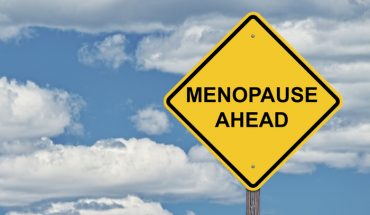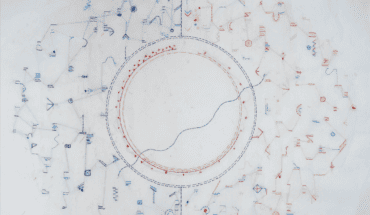Baroness Mary Warnock has contributed to public thinking and policy in many ways, most notably the moral implications of the reproductive technology, In Vitro Fertilization (IVF). In recent years she has regularly lectured on the Society of Apothecaries’ course in philosophy and ethics applied to medicine and healthcare. Here, she talks to Andrew Papanikitas MRCGP PhD, DPMSA Course Director about her role in developing government policy concerning IVF.
Why did you think that the government at the time decided that they wanted to create policy around assisted-reproduction?
I think it takes sort of quite a bit of imagination now to realise how very new and surprising the whole procedure was. And, after all, the birth of Louise Brown in 1978 was the very first IVF birth. And it was in this country so a lot of eyes were on us. The government didn’t think it was something that they could just leave to chance and there had to be a government policy.
What were the issues that your committee was being asked to consider?
Whether to permit the procedure to be carried out at all was the main question, because a lot of people thought that it was completely wrong to have any kind of IVF. And therefore the first question was whether we should go ahead with the procedure. And then, secondly, how it should be regulated.
What would you say were the fundamental issues that needed to be discussed and clarified?
The fundamental issue was that, if IVF was to be successfully carried out, it involved the destruction of a number of embryos because it was necessary to fertilise as many embryos as possible and then select the ones that looked in the best shape, and destroy the rest. And it was the destruction of these embryos that was at the heart of the moral objection that people had with the concept of IVF.
And so, unless there was some clearer thinking on this, the public perception was that one was effectively killing seven or eight people in order to create one child?
Yes, that’s right, that’s exactly right. And therefore the major question turned out to be “What is the moral status of an embryo in the laboratory outside the womb?” And the difficulty in answering that, of course, was that there had never been such a thing before. It was a completely new kind of object. It was no good searching the Bible or any precedent, because there never had been such a thing as a live embryo in the laboratory until Steptoe and Edwards succeeded in successfully keeping one alive. And so we were faced with making a decision about how we morally ought to consider an entity that had never existed until 1978, which was a really weird position to be in really.
How did you decide the cut-off point at which an embryo becomes a morally significant entity?
What we did know was that we had to have an absolutely clear cut-off date.
But the reason that we picked on 14 days was because we were very clearly taught by our marvellous scientific member, Dame Anne McLaren, how the embryo developed from the first two-cell stage, and when the cells in the embryo began to differentiate. And the beginning of differentiation was about 15 days. So we picked on the day before the cells began to differentiate as an absolutely safe moment to say that the embryo must no longer be kept alive in the laboratory. The point of that was that, up to that point when all the cells were multipotent, any of them might develop into anything. But there was no possibility that the embryo, before fourteen days, could have any experiences whatsoever, because it had not even the beginnings of a central nervous system.
So part of that is the appearance of neural cells as well?
Yes, that’s right. So when the first beginnings of the formation of the spinal cord began to appear, we said that keeping an embryo alive was prohibited. And that was really the point of this. So nobody could say that the embryo was suffering before fourteen days, because it had no capacity to suffer.
But, of course, the people who were opposed to this view said that it was ridiculous to say that the embryo can’t be harmed because several of them are going to be killed. And that’s the worst sort of harm. Whether they feel anything or don’t feel it, they are no longer alive. And that must be counted as harm. So we were damaging the embryos by killing them. And that was quite a difficult argument to counter, in a way.
And it’s quite interesting, the different views of personhood within the committee.
It was plain that we had to have obviously medical people, actual practising doctors on the committee, and medical scientists. And we had to have people who represented social matters. And it was thought – I’m never quite clear why this was so – that there had to be a psychiatrist. I think, at that time, nobody was clear whether being an IVF baby would have a terrible psychological effect on people. So that already gave us quite a lot of people on the committee, and then we had to have representatives from various religions.
Did any views change after being presented with the scientific facts?
Yes I think so. I don’t know this for certain, but I think they did. This is why Anne McLaren was such an enormously influential person on this committee, because she it was who taught us what most of us were totally ignorant of, about how the zygote develops into an embryo and then into a foetus and so on. And I think a lot of people thought of the very early embryo as a tiny little sort of foetus. What they didn’t think of it as an invisible coming together of two cells. They just never realised before the minute nature of the first fertilised egg and how you couldn’t see it except under a microscope and so on. And I think that it did come as a great eye-opening surprise to a lot of people including myself.
But I know, I remember, after the committee had finished, I had a letter from Anne McLaren, who became a great friend. And she said that, she had been working on embryonic mice for years, because she was head of the mammalian section. And she, and she said all her working life she simply thought of the fertilised egg, the gamete, as tissue really, not as possibly mice or men, but simply as tissue that she was working on, to see how they developed. And so she became absolutely amazed at the number of abusive letters she later had when she started being on the committee, saying how she was like Nazis condemning Jews to the gas chambers and so on. She was completely amazed by this attitude towards her whole scientific work.
Can you tell me about the diversity of perspectives, and also how emotional it all was as well?
In the final report we included at the end a note of dissent, although everybody signed the report. I thought they ought to have the opportunity to express their misgivings. This Roman Catholic neurologist said that the reason for his total opposition to the destruction of human embryos, at any stage of development whatever, was that they were potentially human persons. He didn’t say they were human persons when they consisted of four cells or sixteen cells. But he said they were potentially human persons. And this was the basis of his, and I daresay of the Pope’s, argument. Actually the issue of what the Pope had said in 1990, was rather different, because he didn’t say that they were potential human persons, these embryos. He raised the question that I kept on trying to stop people raising, which was: “When does life begin?” And he said we don’t know when life begins and we never will, therefore we’ve got to assume that human life begins at fertilisation.
I wonder if you might say a little bit about why you decided to regulate IVF?
I think our main desires for regulation were in feeling that if IVF were to be permitted, it must be permitted only subject to regulation. The reason that we felt that was that it would be so very easy for various ill-qualified people to, quacks of various kinds, to make promises that they couldn’t carry out or to botch the whole procedure. And it was at that time, so incredibly difficult, and also incredibly unlikely to succeed actually. It was not something we thought ought to be offered to women without very certain inspection and regulation to make sure that the quality of what was offered was fitting to the medical profession, so to speak.
But then we had, what now seem bizarre, ideas about how some people would be morally unfit to be offered IVF. I think that this has more or less gone away now, partly because of the sensibleness of the medical profession, who simply don’t like being asked to assess people’s moral suitability to be parents, when embarking on an IVF programme.
Yes, now I’d like to pick you up on that.
People then were so certain that some children would suffer – let’s say a child who was born to an alcoholic mother – that they were determined that they shouldn’t be brought into the world at all. But I think now, if I were in the same position again, I would be much more likely to say that sort of suffering is hypothetical, we don’t know whether the child would suffer or the family would suffer.
I wondered, was there a general benefit or harm to society that was considered as a result of this?
We were conscious that we asking the question, “what sort of society do we want to live in? Do we want to live in a society that takes problems of infertility really seriously among medical conditions that merit treatment?” And the answer to that was, “yes we do, we do think ourselves, and we think of society as a whole should think that infertility is a real difficulty and a condition that should be treated.” So we answered “yes” to that question.
Selected Books by Mary Warnock
- Question of Life: Warnock Report on Human Fertilization and Embryology, Wiley-Blackwell 1985
- Mary Warnock: A Memoir – People and Places Gerald Duckworth and Co Ltd, 2000
- Nature and mortality, Continuum, 2002
- Making Babies: Is There a Right to Have Children? Oxford University Press 2003
- An Intelligent Person’s Guide to Ethics (Intelligent Person’s Guide Series), Gerald Duckworth and Co Ltd 2004
- Ethics Since 1900, Axios Press 2007
- Easeful Death: Is there a case for assisted dying? (With Elizabeth McDonald), Oxford University Press 2009
- Dishonest to God: On keeping religion out of politics, Continuum 2010
- Regulating In Vitro Fertilisation – A personal perspective - 23rd February 2016







